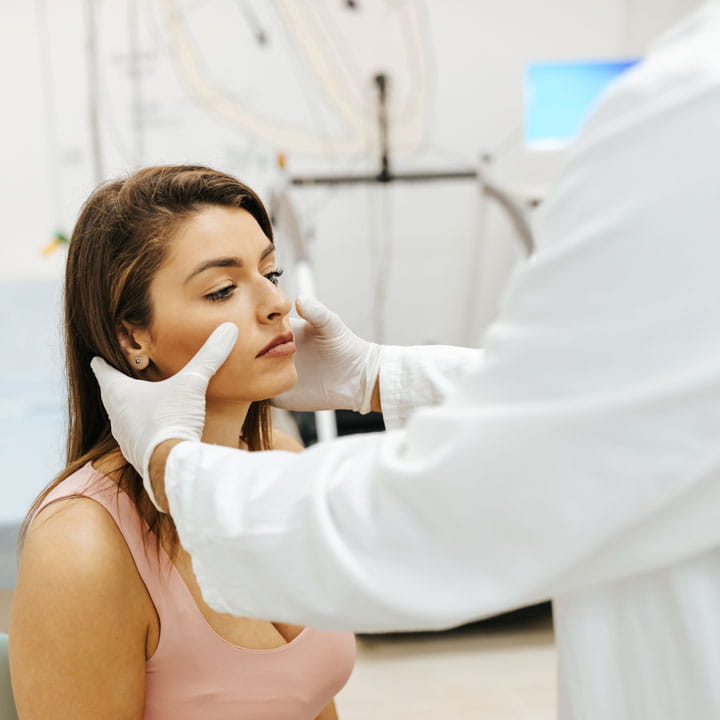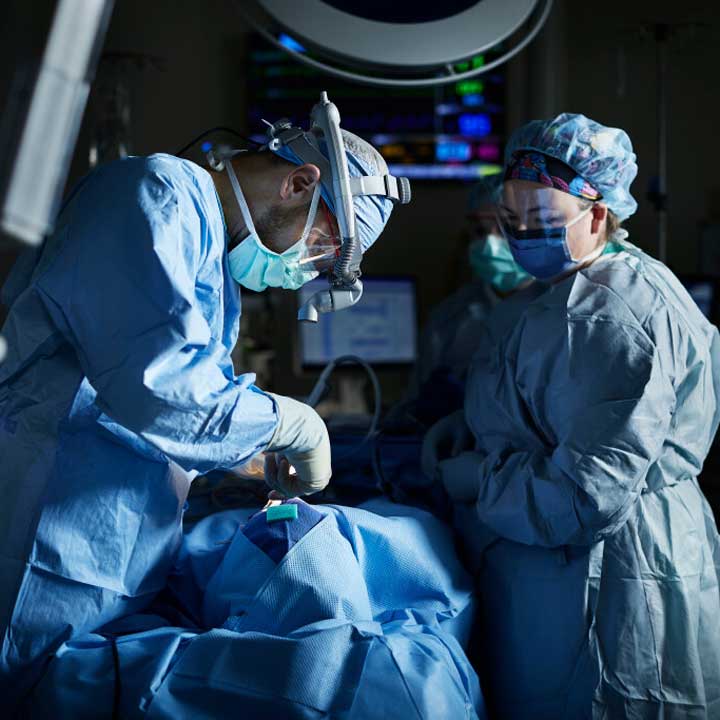 Your nose has many responsibilities, including cleaning the air you breathe in, providing a sense of smell and giving tone to your voice, so when it’s not functioning properly it can impact your quality of life.
Your nose has many responsibilities, including cleaning the air you breathe in, providing a sense of smell and giving tone to your voice, so when it’s not functioning properly it can impact your quality of life.
A deviated septum is one of the most common conditions that affects the nose, including how it works and looks.
It’s estimated that upwards of 80% of people have a deviated septum, but for many the condition isn’t severe enough to cause symptoms or change the look of their face.
However, in some people a deviated septum causes constant congestion, frequent sinus infections or breathing issues.
If you need relief from a deviated septum, or if you’re wondering if a deviated septum is causing your symptoms, you’ve come to the right place at The Ohio State University Wexner Medical Center. Not only is the Department of Otolaryngology – Head and Neck Surgery ranked as one of the best ear, nose and throat (ENT) programs in the country by U.S. News & World Report, but we’re also a regional and national referral center for sinus care and deviated septum.
What is a deviated septum?
The nasal septum is the wall of cartilage and bone that separates the right and left nasal cavities.
A deviated nasal septum occurs when that wall is off center or leans to one side, making one nasal passage bigger than the other.
This deviation can be slight and only noticeable with advanced imaging, or it can be severe, causing a host of sinus-related symptoms. It also can worsen over time, as aging affects the nasal passages.
Causes of a deviated septum
Some people are born with a deviated septum, as it can happen during fetal development or as a result of an injury during childbirth. Other people suffer an injury to the nose that causes the septum to shift from the center.
Risk factors for a deviated septum include:
- Playing contact sports
- Not wearing a seatbelt
- Fighting
Also, your nasal septum might move due to the natural aging process.
 Deviated septum symptoms
Deviated septum symptoms
The severity of symptoms for a deviated septum varies greatly from person to person. Some people experience little to no effect from it, while others experience a decreased quality of life.
Symptoms of a deviated septum include:
- Congestion
- Troubled or noisy breathing
- Headaches or face pain
- Nosebleeds
- Recurrent sinus infections (rhinosinusitis)
- Snoring and sleep apnea
- Other sleep issues, such as a preference for sleeping on one side
How do you know if you have a deviated septum?
If you’re experiencing a few of these symptoms and they’re causing pain, loss of sleep or general annoyance, you’ll want to speak to a doctor about it. Make sure to let us know about all your symptoms and if you’ve suffered an injury to the nose, whether recently or in the past.
Other tools that will help us diagnose a deviated septum include:
- Nasal speculum – This is a handheld tool that will allow your doctor to open the nostril a bit for examination.
- Lighted scope – Also called an otoscope, this tool can look in the ears and nostrils.
- Nasal endoscopy – Using an endoscope, which is a thin, flexible tube with a tiny camera on it, we’ll be able to look around the nasal passages.
- CT scan – This creates a picture of inside the nose.
Deviated Septum Treatment
If you find out you have a deviated septum, but it doesn’t cause symptoms or cosmetic issues, there’s no need to treat it.
However, if your symptoms are noticeable enough, we’ll start treatment to manage those symptoms. We do that through a variety of medications, including:
- Decongestants
- Antihistamines
- Nasal steroid sprays
We try to keep your sinus symptoms at bay using nonsurgical means, but if these medications don’t help or your symptoms worsen, we may consider surgery to fix your deviated septum. This procedure is called a septoplasty.
What happens during a septoplasty?
You’ll be administered anesthesia, either local (at the nose) or general (put to sleep) depending on the severity of the deviated septum and where the surgery is being performed. Then, we’ll reposition the nasal septum. Sometimes this requires us to cut or remove parts of the cartilage to make the septum straight.
The procedure typically lasts about an hour, and you go home the same day.
Recovery time can vary, but generally, you’ll have a swollen and bruised nose for a few weeks but should be back to normal after that.
If your provider recommends rhinoplasty (plastic surgery for the nose), this can also affect recovery time. Sometimes plastic surgery is also suggested to help reshape the outside of the nose if it’s been impacted by a deviated septum.
Additional Information
How would you like to schedule?
Don’t have MyChart? Create an account
